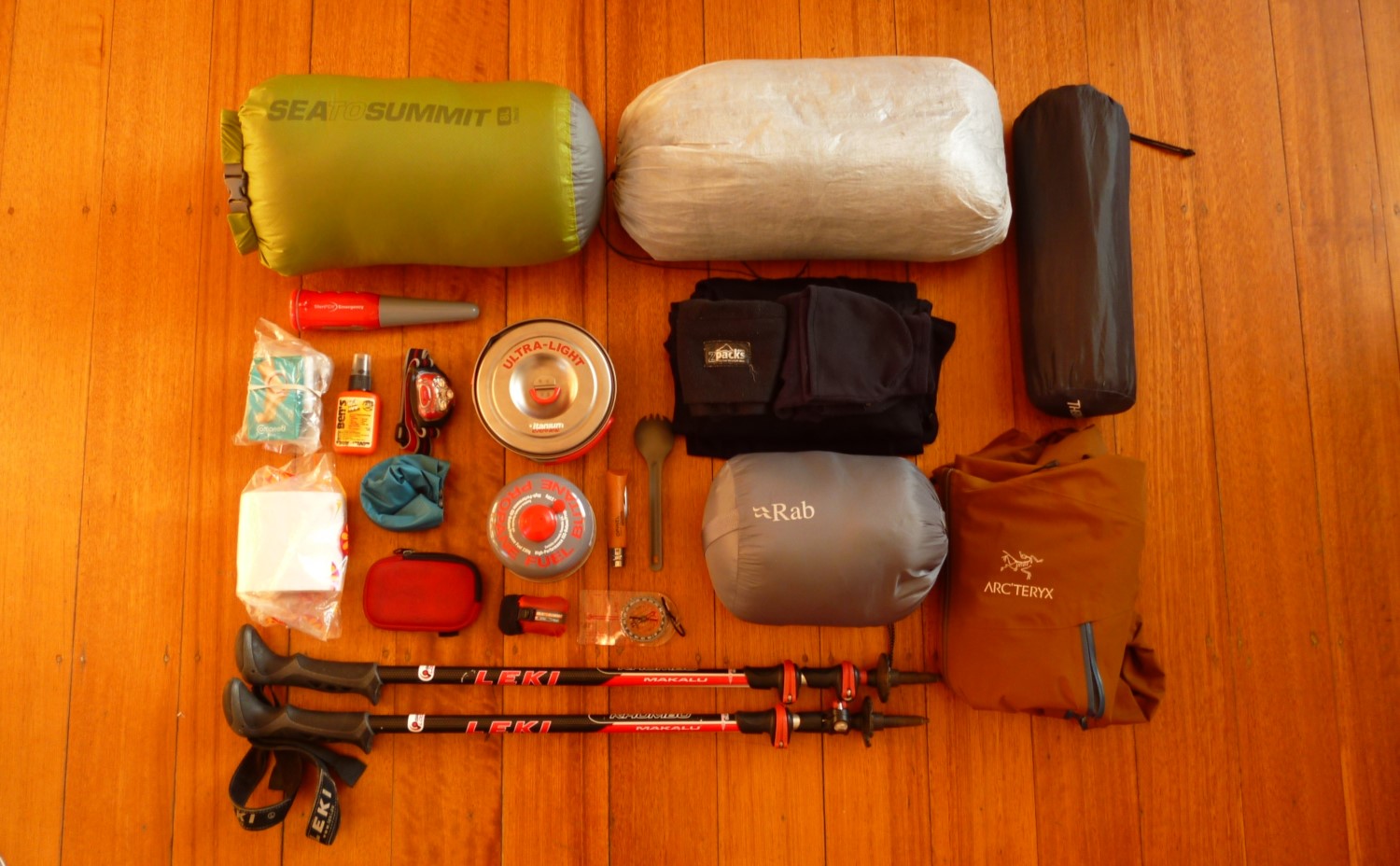Best Dive Watches Under $500 of 2023
JUMP TO: BULOVA OCEANOGRAPHER / CASIO MEN’S DURO / CITIZEN ECO-DRIVE / LUMINOX MEN’S 3001 / INVICTA PRO DIVER / BUYING ADVICE
Author: Rose Martin
The Short Version
Best Overall: Bulova Oceanographer
Best for Durability: Casio Men’s Duro
Best Power Source: Citizen Eco-Drive Promaster Diver
Best for Luminosity: Luminox Men’s 3001
Best on a Budget: Invicta 8932 Pro Diver
The Long Version
As we explained in our Best Dive Watches article, dive watches were an essential bit of gear back in the days when recreational diving was starting out. Just like ordinary watches, they display the time, and often the date, but they also come with a range of features that makes them suited to diving.
Nowadays, dive watches have been largely usurped by tech-heavy dive computers that not only tell the time, but also record, monitor, and display details about almost every aspect of your dive. Yet many people still like to don a dive watch for their underwater explorations because they’re so easy to use, make great backups in case your computer fails, and, of course, they add a touch of class to your scuba get-up.
All dive watches should have luminous hands and marking that can be read in dark conditions (like when you’re diving through a wreck), bezels that can be used to monitor the elapsed dive time, and, of course, a serious waterproof rating. But that’s where the similarities end.
Dive watches vary hugely when it comes to extra features, materials, and, crucially, price. A luxury dive watch can set you back thousands of dollars but, if that’s a little bit out of your price range, don’t worry – there are heaps of awesome options out there for every budget.
So, to help you separate the bargains from the bad, we’ve brought you a selection of the best dive watches for under $500 – enjoy!
If you love reading this review of the best dive watches under $500, then you'll likely love reading some of our other diving content:
Need To Know What To Look Out For?
If you’re new to the world of dive watches, and need some help with the technical stuff, then be sure to check out our buying advice at the end of the article!
Best Overall: BULOVA OCEANOGRAPHER
DIAMETER: 44 mm
MOVEMENT: Automatic
WATER RESISTANCE: 200 m
PRICE: $$$
PROS: ISO-certified, stylish design, decent power reserve, durable materials
CONS: Expensive budget option, price varies, not ideal for petite wrists
If you’re after a high-end dive watch without a high-end price tag, then the Bulova Oceanographer certainly has a lot to offer.
With a large face and minimalistic markings, the Bulova Oceanographer is incredible easy to read at a glance – even in darkness thanks to the luminous hands, hour markings, and bezel markers that shine exceptionally brightly. What’s more, the highly scratch-resistant sapphire crystal will make sure that your display remains clear for years to come, and there’s a handy date display at the 3 o’clock position too.
The silver-tone stainless steel band and case, combined with a unique green dial, give this watch a striking, yet extremely classy, appearance. Plus, if you decide you don’t like the green (although we’re big fans), then there are some other color options out there – although they might affect the pricing. Although this large diameter might mean that this watch isn’t ideal for people with particularly small wrists, it doesn’t appear overly large when worn thanks to the short lugs and slim design.
The unidirectional bezel features continuous minute markers which, combined with a water-resistance of 200 meters, means that you can keep precise track of time on your dives… but don’t be surprised if you end up wearing this stylish watch as much on dry land as you do in the water! In case you weren’t sold already, this dive watch is ISO-certified and powered by a highly accurate self-winding movement with a power reserve of 42 hours.
Granted, to keep costs under $500 you might not have your pick of every color option, and the prices do fluctuate from time to time… but the Bulova Oceanographer is a quality and super stylish dive watch that comes with a surpringly reasonable price tag.
Best for Durability: CASIO MEN’S DURO
DIAMETER: 45 mm
MOVEMENT: Casio quartz 2784 module
WATER RESISTANCE: 200 m
PRICE: $
PROS: Durable, fantastic value for money, reliable, date display
CONS: Strap could be better, Face is a little large
Casio has a reputation for manufacturing durable products as a fraction of the price of their competitors, and the Casio Men’s Duro is no exception.
Constructed from corrosion-resistant stainless steel and a durable resin band, this watch is built to last. Yet despite its rugged construction, it’s retained a surpringly sleek appearance. The large black-and-white dial is uncluttered thanks to its generous spacings and the minimalistic markers, and there’s even a handy date display in the 3 o’clock position. The reliable quartz movement is battery-powered, and one battery will keep you going for at least 3 years (plus, battery replacements are easy to get hold of). Although these features make this a great watch for everyday wear and sports, it also comes with all the features you’d expect to see in a dive watch.
The screw-down crown forms an impenetrable seal, giving this watch an overall waterproof rating of 200 meters. The unidirectional bezel is easy to use and has markings every minute up to 15 minutes (and every 5 minutes afterwards), which is super handy for timing underwater activities. The luminous markers and hours hands mean you can keep track of time even when the visibility is poor, and the resin strap is waterproof so you won’t have a soggy wrist after the dive.
Having said that, the resin strap isn’t the comfiest out there, and it give the watch a ‘sporty’ look that not everyone will like – but at least it’s super easy to swap for another one. Plus, although the large face is great for underwater use, some people might prefer something a little smaller for day- to-day wear.
Despite this, as the name suggests, the Casio Men’s Duro is one incredibly durable dive watch that offers fantastic value for money overall.
Best Power Source: CITIZEN ECO-DRIVE PROMASTER DIVER
DIAMETER: 43 mm
MOVEMENT: Citizen 3-hand E168
WATER RESISTANCE: 200 m
PRICE: $$
PROS: Light-powered, awesome power reserve, 5-year warranty, great value for money
CONS: Slightly bulky, date can be hard to read, coating could be better
If you’re after a watch that’s as good for you as it is for the environment, then you should definitely check out the Citizen Eco-Drive Promaster Diver.
The 43mm diameter leaves plenty of space for continuous markings around the dial, as well as the bezel, to make sure you can keep a beady eye on the time. Plus, there’s a handy date display in the 4 o’clock position, and the entire face is covered in an anti-reflective mineral coating, which can handle some serious wear and tear (although it’s not quite as durable as more expensive coatings).
The stylish black-and-white dial is just as at home in the office as it is underwater but, if you want to jazz things up a bit, there are also blue and green options available. All versions come with a color-coordinated rubber strap that’s incredibly comfortable, and it is easily replaced if you’re after something a little more formal.
This ISO-certified dive watch is fully equipped for life underwater, and it features luminous hands, a unidirectional bezel, and a water-resistance rating of 200 meters.
And now for our favorite part… unlike most dive watches on the market, the Promaster is fueled by a light-powered eco-drive – but what does this mean? Well, both natural and artificial light are constantly converted to energy that the watch either uses immediately or stores up for use when the lights go out. Just one charge can keep this watch running for as long as 6 months, and the battery can be recharged forever, so you’ll have to worry about replacing the battery – great for the environment and your wallet!
This watch might not be the absolute cheapest option out there, but it comes with heaps of high-end features as well as an included 5-year warranty, so we reckon it offers awesome value for money overall!
Best for Luminosity: LUMINOX MEN’S 3001
DIAMETER: 43 mm
MOVEMENT: Swiss quartz
WATER RESISTANCE: 200 m
PRICE: $$
PROS: Awesome luminosity, easy-to-read bezel, lightweight carbon fiber case
CONS: Coating could be sturdier (mineral)
If you like deep dives, wreck dives, and diving even when the conditions are poor, the Luminox Men’s 3001 could be right up your street.
The hands, hour indicators, and bezel markers can be read even in the darkest of waters thanks to their incredibly bright luminescence. What’s more, unlike traditional luminous watches, the light is generated by miniscule gas capsules that power themselves – so you don’t have to remember to charge your watch before a dive ever again.
On top of that, the polyurethane strap, stainless-steel crown, and carbon-reinforced PC case make for one super rugged watch, although the mineral coating could be better. Plus, with a water-resistance rating of 200 meters, a unidirectional bezel, and a super secure crown, this watch is fully equipped to deal with life underwater.
The large face is easy to read, and you can opt for either a classic black-and-white or rust-and-black dial. The polyurethane strap is incredibly comfortable, but it can easily be swapped out for a fabric one if you prefer, and the reliable Swiss quartz movement is battery-powered (with a battery life of around 4 months).
With a diameter of 43mm, this watch might be a tad bulky for some people, and the PC-coated face definitely gives off a sporty vibe that might not go down so well at the office. However, if you’re after a dive watch that you can depend on even when the conditions take a turn for the worse, then this could be the one for you.
Best on a Budget: INVICTA 8932 PRO DIVER
DIAMETER: 37.5 mm
MOVEMENT: Japanese quartz
WATER RESISTANCE: 200 m
PRICE: $
PROS: Lightweight, sleek and stylish appearance, magnified date display
CONS: Not ideal for people with large wrists, luminescence could be brighter
If you’re after a dive watch that you can wear for any occasion, but don’t have much cash to splash, then the Invicta 8932 Pro Diver could be just what you’re looking for.
With a diameter of just 37.5mm, and a slim strap to boot, the Pro Diver is the smallest and lightest watch on our list. This, combined with the stainless-steel band and sleek black dial, make this a fantastic watch for formal occasions. Yet despite looking like a regular watch, the Pro Diver comes with a waterproof rating of 200 meters, a unidirectional bezel, and luminous hands and markers – everything you could want in a dive watch.
The bezel features continuous minute markers, which come in super handy when you’re timing activities underwater, and there’s even a magnified a date display at 3 o’clock (a feature usually reserved for more expensive models). The small dial, combined with a thin strap, makes this watch an awesome shout for people with petite wrists – but be warned that it might not be ideal for people with larger wrists.
Of course, there have been some compromises to keep the price this low – the crown is a tad fiddly to use, the luminescence could be brighter, and the mineral crystal could be upgraded… but, on the whole, the Pro Diver boasts some awesome features despite its incredibly low price tag.
BUYING ADVICE FOR DIVE WATCHES
Construction
SIZE: Dive watches come in a range of sizes. Faces with larger diameters can be easier to read, and there’s more space for extra touches like date displays and additional dials. On the flipside, larger faces add to the overall bulk and weight of the watch, which can put some people off wearing them for day-to-day activities, and it can ramp up the cost too because of the extra materials.
Ultimately, which size you like will come down to personal preference. But it’s a good idea to try out a few different sized watches before you order anything online, so you don’t end up with a horrible surprise.
MATERIALS: As they’re designed for use in salt water, dive watches must be constructed from anti-corrosive materials. Stainless steel is the most common materials used for the cases thanks to its excellent corrosion resistance, but gold is also used for some of the more luxurious watches, and ceramic is often used for the bezel because it’s tough and light.
Dive watches should also be strong enough to handle those inevitable bumps and scrapes that occur when you’re lugging your scuba gear around, so they feature thick crystals to protect them. Sapphire is the most scratch-resistant, but it’s also pretty expensive, and the more economical watches tend to use mineral or Hardlex crystals instead.
STRAP: Dive watch straps are typically constructed from stainless steel (to match the case) or some kind of rubber (especially the ‘sporty’ watches). You find leather and fabric straps out there too, but these generally aren’t considered as robust.
Many watches have straps you can swap too, so you could always wear your watch with a leather strap for day-to-day use then swap it out for a rubber strap for your diving holidays.
Display
ANALOGUE VS DIGITAL: In 1926, Rolex introduced the world’s first water-resistant watch – the ‘Oyster’. A few years later, Omega released the Omega Marine, the world’s first diving watch.
These analog watches inspired dive watches for years to come, and it wasn’t until 1972 that the digital watch was created. By the 1980s, dive computers were already beginning to take off, so there wasn’t much time for digital diving watches to thrive. This means that the vast majority of dive watches are analog and, inspired by those early creations, tend to be sleek and elegant.
Despite this, some digital watch manufacturers, like Casio, have branched out into the realm of waterproof watches suitable for diving, so there are a few digital dive watches on the market. They tend to be bulky and made of rubber, and embrace the typical sporty look rather than try to compete with the classics when it comes to old-school charm.
Both types of watch function perfectly well underwater, so the choice will ultimately come down to personal preference.
DEALING WITH DARKNESS: if you’re diving at depth on a cloudy day, things can get pretty dark. Plus, cave and wreck dives are often carried out in complete darkness. So, a dive watch needs to be readable even in the pitch black. Analog watches handle this by adding a luminous fill to the hands and minute markers, while digital watches use backlights instead.
SUBDIALS: Dive watches tend to have fewer subdials than regular watches, as they’re so small they’re difficult to read underwater, especially if the light is limited. Despite this, there are some dive watches on the market with subdials that provide additional functions, like tracking elapsed time or displaying a different time zone.
DATE DISPLAY: Many dive watches feature a date display in either the 3 or 6 o’clock positions. Some will show just the date, while others will include the day too. And some watches place a magnifier over the window so it can be read more easily.
Although a date display isn’t an essential feature when it comes to diving, many dive watches are designed to be worn for regular activities too, and a date display is a useful feature for watches designed to be worn on land as well as in the water.
Movement
The movement is the powerhouse of any watch, and they’re typically manual, automatic, or quartz.
MANUAL: Manual movements are entirely mechanical and require extremely careful craftsmanship, which is why they’re often the movement of choice for highly esteemed watchmakers. The energy from a wound spring is used to power the watch, and some require daily winding while others can operate for several days (depending on how big the power reserve is).
AUTOMATIC: Automatic movements are similar to manual ones when it comes to craftsmanship, but the spring is powered by wrist movement. This avoids the need for manual winding, unless you haven’t worn your watch for a while.
QAURTZ: Quartz movements use battery power to keep track of time, and they’re known for being the most accurate type of movement. Battery life varies, but they typically last anywhere from 10 to 24 months before they need changing. Nowadays, there are solar quartz watches on the market that can be recharged with sunlight, so the battery may never (or rarely) need replacing.
Other features
ROTATING BEZELS: When you’re on a dive, you want to be able to sit back and relax and not have to remember lots of pesky details, like what time you got in the water.
But it’s super important you know how long you’ve been diving… so, what’s the solution?
A rotating bezel of course!
Just before you descend, you rotate the bezel marker so it’s aligned with the minute hand. The hand will then move as the dive progresses, but the marker will stay put. This means you can tot up how many minutes have passed by counting the minutes between the bezel marker and the minute hand (most dive watches have 5-minute markings along the bezel to help with this).
The bezel 0-marker (and sometimes the other markers) will be luminous, just like the hand, so you can keep track of your dive time even in the dark. As a safety precaution, dive watch bezels only rotate in one direction (clockwise), this means that you can’t accidentally knock the bezel marker forwards during the dive, which would indicate that you’ve sent less time underwater than you really have.
HELIUM RELEASE/ESCAPE VALVE: This is a spring-loaded valve that can open manually or automatically, and allows helium to safely escape from the watch on ascent.
Watches with this feature are catered to saturation divers, who breathe in air mixtures containing a high concentration of helium at significant depths. Although dive watches keep out large molecules, like water, they’re unable to keep out helium because of its tiny molecular size, so it eventually makes its way inside the watch.
During ascent, decreases in atmospheric pressure cause gas that’s absorbed into the body tissues (and into the back of the watch) to diffuse back into the environment. Divers make decompression stops to allow gas to safely leave their body, and the helium escape valve does the same thing for the watch – it provides a passageway for helium to leave the watch without causing damage.
WATER RESISTANCE: Of course, all good dive watches need to be waterproof, and you’ll see that they all come with waterproof ratings – but what do they actually mean?
Well, the main thing to know is that a waterproof rating of, say, 30 meters, doesn’t mean that a watch can handle being submerged at that depth for extended periods of time.
Water-resistance ratings actually refer to how well a watch can stand up under pressure, and this changes with depth. So, if you’ll be diving at around 30 meters, don’t be fooled into thinking you’re okay with a watch with a 30 m waterproof rating.
Although you might get away with using a 100 meter-rated watch for diving, generally, the minimum rating you want is 200 meters, and most of the high-end dive watches offer a water-resistance rating of 300 meters.
ISO certification
One final thing you might come across when you’re shopping around for a new dive watch is the phrase ‘ISO-certified’ – so what’s this all about?
Basically, the International Organization for Standardization (hence ISO) outlined a series of standards that watches must meet in order to be technically deemed a dive watch. These standards include things like a waterproof rating of at least 100m, a unidirectional bezel, readability in the dark, and corrosion-, magnetic-, and shock-resistance.
It’s important to note that although the certification can indicate a high-quality dive watch, there are plenty of awesome dive watches out there that aren’t ISO-certified (like the Rolex dive watches). So, while it can be a useful indicator, don’t get too hung up on whether or not a watch is ISO-certified.
MORE INFORMATION
If you loved this gear review article, then you'll likely love getting submerged in our other underwater content:
Or check out our entire list of Gear Reviews, Knowledge Base Articles, or Destination Guides for more diving, snorkeling, and outdoors related content.





















